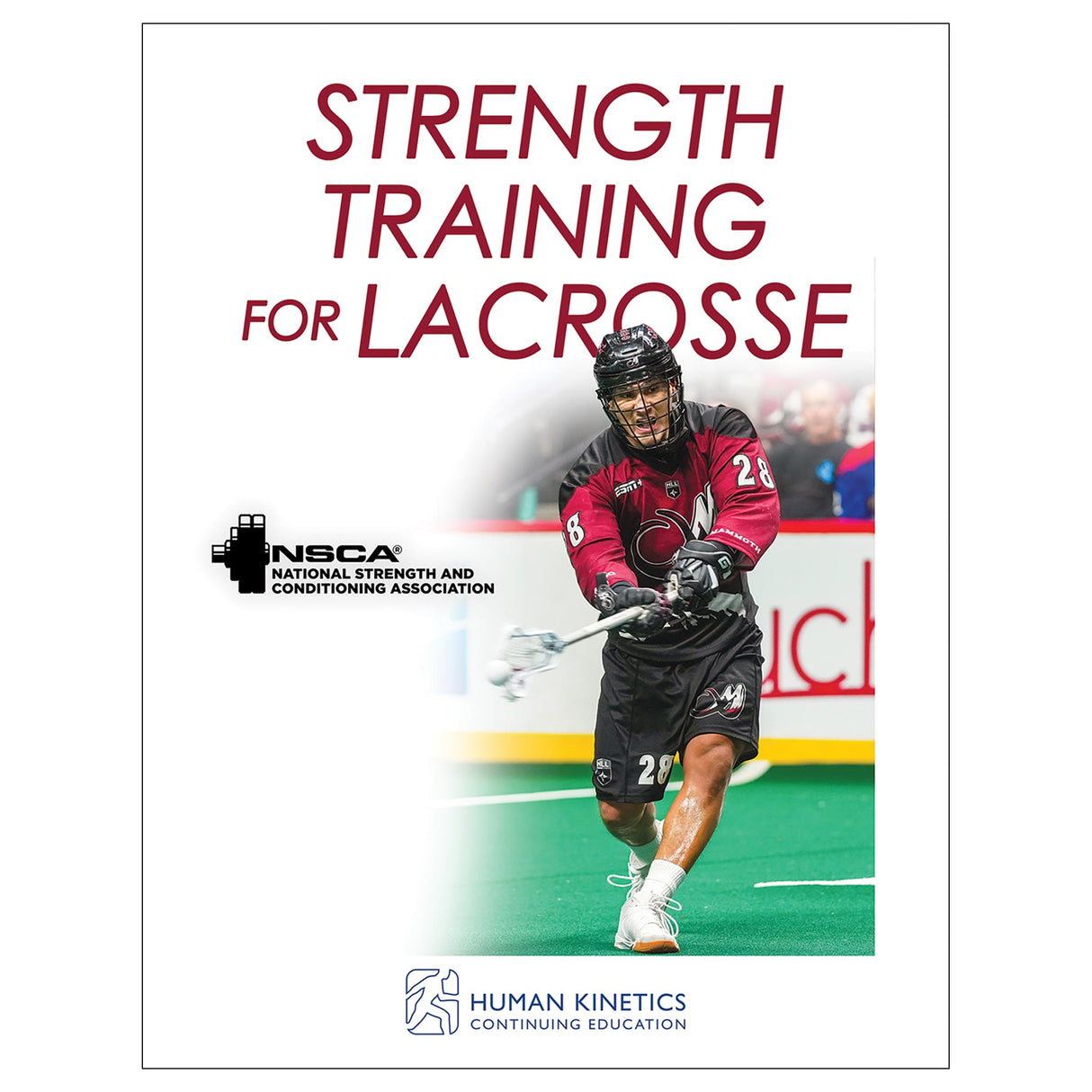Strength Training for Lacrosse Online CE Exam With Print Book
Author: Human Kinetics
$142.95 CAD
Human Kinetics strongly recommends that you complete your exam within the calendar year of your date of purchase to ensure approved credits do not expire for your organization.
- Strength Training for Lacrosse book
- Online continuing education exam
Developed with the expertise of the National Strength and Conditioning Association (NSCA), Strength Training for Lacrosse provides an overarching biomechanical analysis of lacrosse and specific analyses of the physical demands of each position: defenders, midfielders, attackers, and goalies. Using these analyses, you can design an effective training program that translates to performance on the field. You will also find the following:
- 10 detailed protocols to test strength, power, speed, agility, and high-intensity endurance capacity
- 13 total body resistance exercises with 8 variations
- 16 lower body exercises with 10 variations
- 29 upper body exercises with 21 variations
- 20 anatomical core exercises with 19 variations
- 53 sample programs for off-season, preseason, in-season, and postseason resistance training
Backed by the NSCA and the knowledge and experience of individuals who have years of experience as strength and conditioning professionals for lacrosse, Strength Training for Lacrosse is the authoritative resource for creating lacrosse-specific resistance training programs.
After reading the book, certified professionals can take the companion CE exam to earn continuing education credits.
Learning Objectives
- Demonstrate the importance of resistance training in lacrosse athletes.
- Describe the sport-specific skills involved in lacrosse.
- Describe the various physical qualities related to performance in lacrosse.
- Describe and select appropriate testing protocols.
- Select appropriate exercises for lacrosse athletes.
- Describe training program variables for resistance training of lacrosse athletes.
- Explain safe and effective spotting techniques and breathing techniques in the performance of resistance training exercises.
- Identify the primary muscles trained with specific resistance training exercises.
- Identify proper coaching tips, progressions, and regressions for resistance training exercises.
- Describe the goals, objectives, length, structure, and organization of a resistance training program for the off-season, preseason, in-season, and postseason.
Audience
Certified strength and conditioning professionals, personal trainers, or other related professionals who supervise and train athletes for lacrosse.Dillon Ward
Introduction
Matt Nein
Part I. Principles of Sport-Specific Resistance Training
Chapter 1. Importance of Resistance Training
Karen Sutton and Brittany M. Ammerman
Chapter 2. Analysis of the Sport and Sport Positions
John Cole and Justin Kilian
Chapter 3. Testing Protocols and Athlete Assessment
Thomas Newman
Chapter 4. Sport-Specific Program Design Guidelines
Nicole Shattuck and JL Holdsworth
Part II. Exercise Technique
Chapter 5. Total Body Exercise Technique
JL Holdsworth and Edward R. Smith, Jr.
Chapter 6. Lower Body Exercise Technique
JL Holdsworth and Edward R. Smith, Jr.
Chapter 7. Upper Body Exercise Technique
JL Holdsworth and Edward R. Smith, Jr.
Chapter 8. Anatomical Core Exercise Technique
Andrew Sacks and Jessi Glauser
Part III. Program Design Guidelines and Sample Programs
Chapter 9. Off-Season Programming
Drazen Glisic (High School), Tracy Zimmer (College Women), David Eugenio Manning (College Men), and Joel Raether (Professional)
Chapter 10. Preseason Programming
Drazen Glisic (High School), Tracy Zimmer (College Women), David Eugenio Manning (College Men), and Joel Raether (Professional)
Chapter 11. In-Season Programming
Drazen Glisic (High School), Tracy Zimmer (College Women), David Eugenio Manning (College Men), and Joel Raether (Professional)
Chapter 12. Postseason Programming
Drazen Glisic (High School), Tracy Zimmer (College Women), David Eugenio Manning (College Men), and Joel Raether (Professional)





